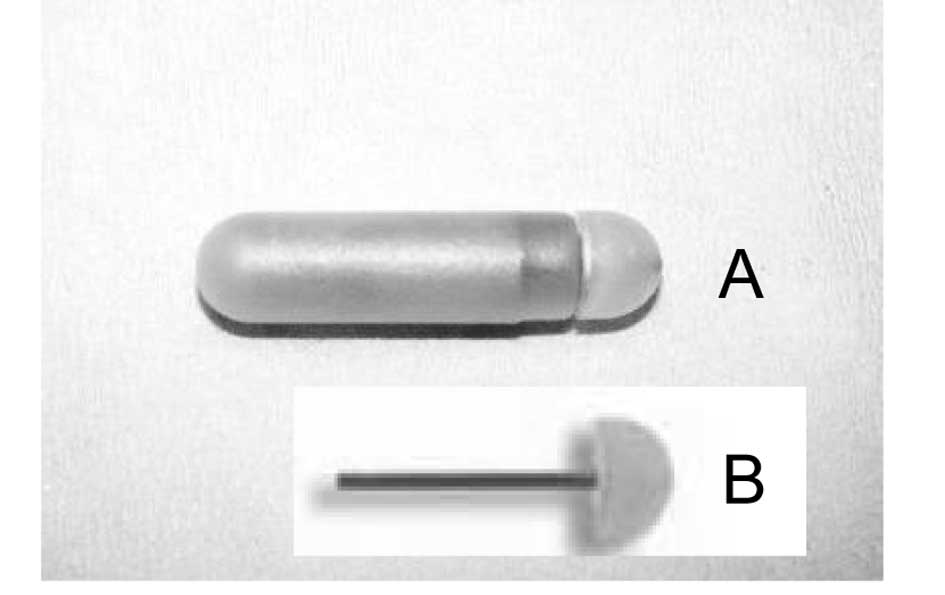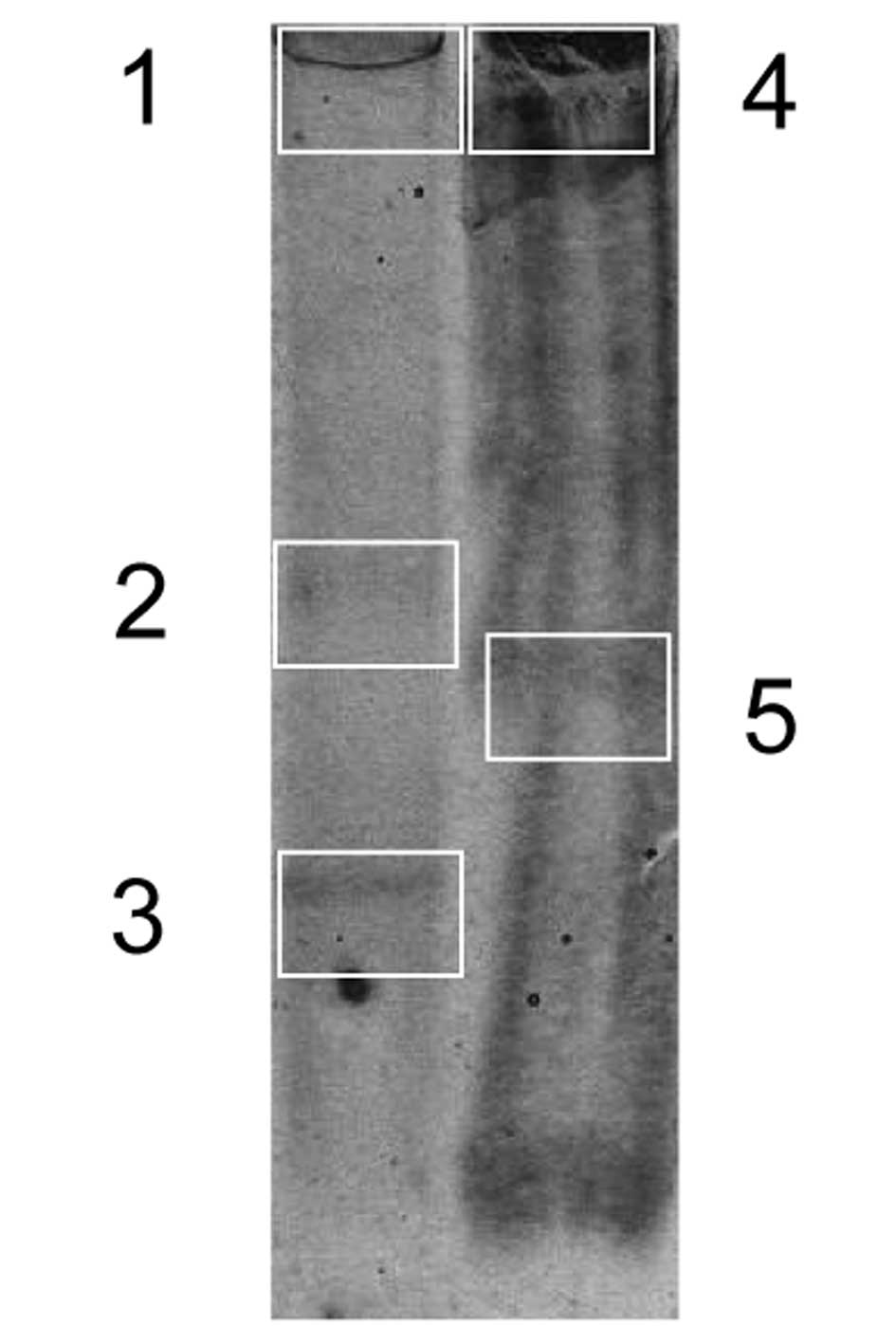Case Report
Challenging delivery of VLHL NS plasminogen activator inhibitor-1 by osmotic pumps in diabetic mouse: A case report
- Authors:
-
View Affiliations / Copyright
Affiliations:
Urology Research Center, Department of Urology, Health Science Campus, University of Toledo, Toledo, OH, USA
-
Pages:
661-664
|
Published online on:
July 17, 2012
https://doi.org/10.3892/etm.2012.639
- Expand metrics +
Metrics:
Total
Views: 0
(Spandidos Publications: | PMC Statistics:
)
Metrics:
Total PDF Downloads: 0
(Spandidos Publications: | PMC Statistics:
)
This article is mentioned in:
Abstract
ALZET® osmotic pumps are implantable devices used in animals for the continuous infusion of drugs or proteins at controlled rates from 1 day to 4 weeks. Pumps have been used successfully in a number of studies on the effects of controlled delivery of a wide range of experimental agents, independent of their properties. In the present study, use of these pumps was made in mice with diabetic nephropathy. Plasminogen activator inhibitor-1 (PAI-1) mediates diabetic nephropathy, which is characterized by the excessive accumulation of extracellular matrix (ECM) in the kidney. Disproportionate PAI-1 inactivates tissue plasminogen activator, which is one of the proteolytic enzymes in a cascade responsible for ECM remodeling in the kidney. The decrease of PAI-1 in the kidney has been shown to arrest the progression of nephropathy in experimental animals. This was achieved using inactive PAI-1R which increased the clearance of wild-type PAI-1 in order to protect net proteolytic activity and ECM clearance. However, this protein has a brief half‑life in vivo, therefore, high and frequent doses are required. Thus, VLHL NS PAI-1 protein with a long half-life of over 700 h (Gln197Cys, Gly355Cys) inactivated by single point mutation (Arg369Ala) was used. Following the sacrifice of animals the tips of the flow moderators of the osmotic pumps in the treated animals were found to be clogged. In addition, from each pump from the treatment group, but not controls, we collected 50-150 µl of clear liquid containing VLHL NS PAI-1, cellular and serum proteins suggesting early pump sealing by cellular material. In conclusion, despite encouraging results obtained for the PAI-1R protein, the method of VLHL PAI-1 delivery should be ameliorated.
View References
|
1
|
Babin MC, Ricketts K, Skvorak JP, Gazaway
M, Mitcheltree LW and Casillas RP: Systemic administration of
candidate antivesicants to protect against topically applied sulfur
mustard in the mouse ear vesicant model (MEVM). J Appl Toxicol.
20(Suppl 1): S141–S144. 2000. View Article : Google Scholar
|
|
2
|
Buffelli M, Busetto G and Cangiano A: The
use of in vivo direct drug application to assess neural regulation
of muscle properties. J Neurosci Methods. 106:113–120. 2001.
View Article : Google Scholar : PubMed/NCBI
|
|
3
|
Knedla A, Riepl B, Lefèvre S, et al: The
therapeutic use of osmotic minipumps in the severe combined
immunodeficiency (SCID) mouse model for rheumatoid arthritis. Ann
Rheum Dis. 68:124–129. 2009. View Article : Google Scholar : PubMed/NCBI
|
|
4
|
Tejeda M, Gaal D, Hullán L, et al:
Continuous administration of the somatostatin structural derivative
/TT-232/by subcutaneously implanted osmotic pump improves the
efficacy and potency of antitumor therapy in different mouse and
human tumor models. Anticancer Res. 28:2769–2774. 2008.
|
|
5
|
Swiercz R, Keck RW, Skrzypczak-Jankun E,
Selman SH and Jankun J: Recombinant PAI-1 inhibits angiogenesis and
reduces size of LNCaP prostate cancer xenografts in SCID mice.
Oncol Rep. 8:463–470. 2001.PubMed/NCBI
|
|
6
|
Huang Y, Border WA, Lawrence DA and Noble
NA: Mechanisms underlying the antifibrotic properties of
noninhibitory PAI-1 (PAI-1R) in experimental nephritis. Am J
Physiol Renal Physiol. 297:F1045–F1054. 2009. View Article : Google Scholar : PubMed/NCBI
|
|
7
|
Huang Y, Border WA, Yu L, Zhang J,
Lawrence DA and Noble NA: A PAI-1 mutant, PAI-1R, slows progression
of diabetic nephropathy. J Am Soc Nephrol. 19:329–338. 2008.
View Article : Google Scholar : PubMed/NCBI
|
|
8
|
Chorostowska-Wynimko J, Swiercz R,
Skrzypczak-Jankun E, Wojtowicz A, Selman SH and Jankun J: A novel
form of the plasminogen activator inhibitor created by cysteine
mutations extends its half-life: relevance to cancer and
angiogenesis. Mol Cancer Ther. 2:19–28. 2003. View Article : Google Scholar
|
|
9
|
Jankun J, Aleem AM, Specht Z, et al: PAI-1
induces cell detachment, downregulates nucleophosmin (B23) and
fortilin (TCTP) in LnCAP prostate cancer cells. Int J Mol Med.
20:11–20. 2007.PubMed/NCBI
|
|
10
|
Hjortsø E, Jordening H, Jensen H, Munck O
and Qvist J: The function of a continuous medication system in
subatmospheric pressure environment. Scand J Clin Lab Invest.
46:293–295. 1986.PubMed/NCBI
|
|
11
|
Kutz SM, Hordines J, McKeown-Longo PJ and
Higgins PJ: TGF-β1-induced PAI-1 gene expression requires MEK
activity and cell-to-substrate adhesion. J Cell Sci. 114:3905–3914.
2001.
|
|
12
|
Samarakoon R, Higgins SP, Higgins CE and
Higgins PJ: TGF-β1-induced plasminogen activator inhibitor-1
expression in vascular smooth muscle cells requires
pp60(c-src)/EGFR(Y845) and Rho/ROCK signaling. J Mol Cell Cardiol.
44:527–538. 2008.
|
|
13
|
Palmieri D, Lee JW, Juliano RL and Church
FC: Plasminogen activator inhibitor-1 and -3 increase cell adhesion
and motility of MDA-MB-435 breast cancer cells. J Biol Chem.
277:40950–40957. 2002. View Article : Google Scholar : PubMed/NCBI
|
















